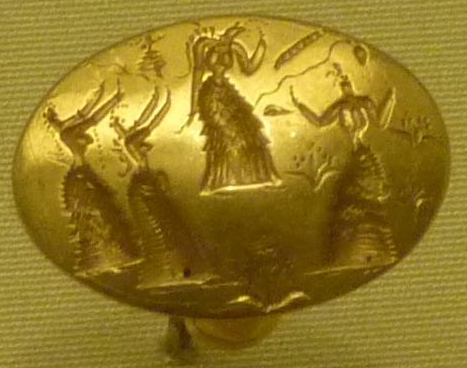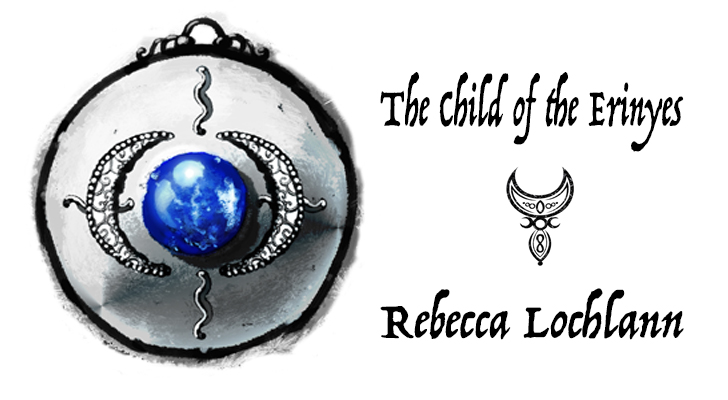Blog Archives
She of Many Names
“There was a tendency in Minoan Crete to combine the goddesses into one deity.” Rodney Castleden, The Knossos Labyrinth
Athene is mentioned again and again on the tablets and records from Crete. Her name was spelled “a-ta-na,” and most agree this was an early form of Athene. On at least one
tablet, the name “a-ta-na” is combined with “po-ti-ni-ja,” which is thought to be Potnia. Thus in my book, you’ll see the declaration “Potnia Athene,” used several times. It simply meant “Lady,” or “Mistress.”

Photo: “P1010629 crop” by Aeleftherios – Own work. Licensed under Creative Commons Attribution-Share Alike 3.0 via Wikimedia Commons – http://commons.wikimedia.org/wiki/File:P1010629_crop.png#mediaviewer/File:P1010629_crop.png — https://creativecommons.org/licenses/by-sa/3.0/deed.en
It’s important to remember when reading The Year-god’s Daughter (and the connecting books, The Thinara King and In the Moon of Asterion,) that what we know about these ancient, pre-Hellenic deities is sparse and fragmented. That Athene existed on Crete and was very important is pretty clear. That there were other goddesses is not so clear; the various names might well have been titles used for different aspects or roles of the same goddess. My story takes place before the familiar pantheon we all know from Classical Greece. Most experts agree that Athene existed long before they did, and that she came from somewhere else, not Greece. So I chose to use Athene almost exclusively, incorporating the various names as alternate names for her. Athene was The Great Goddess, basically, and all these other images or personalities were simply variations of her. Robert Graves also influenced my decision to use Athene this way. In The Greek Myths, he talks again and again about Athene being a pre-Hellenic goddess of vast importance, to whom the sacred kings were sacrificed, and he shares with his readers many of her Names and Titles.
Many mythologists call The Goddess “She of Many Names.” Here are a few titles and names I used in The Child of the Erinyes.
POTNIA: “Mistress,” or “Lady.”
“The Great Goddess or Mother Goddess held sway until the very end of the Minoan civilization and was even for a time in a dominant position in the Mycenean pantheon, until her position was supplanted by Zeus. The Great Goddess seems to have been called Potnia, at least in the final decades of the Labyrinth’s history. The name recurs in place after place, not just on Crete but throughout the Mycenean world. Meaning no more than ‘The Lady’ or ‘The Mistress’, it nevertheless carried powerful connotations and resonances: it was clearly the proper name of an important goddess.” Rodney Castleden, The Knossos Labyrinth
“Potnia had a domestic aspect as a guardian of households and cities. She was the wife and mother, the dependable figure of order and reason. In a sense she represented the conscious mind. Hers, probably, was the double-axe symbol that we find at so many Minoan sanctuaries on Crete, but possibly the pillar and the snake were her symbols too.” Rodney Castleden, The Knossos Labyrinth
BRITOMARTIS: “Lady of the Wild Things.”
“There were wild goddesses too, associated with untamed landscape and consorting with wild beasts. . . . A chaste and free wild goddess, who was a huntress and tamer of wild beasts, is now often referred to as the Mistress of Wild Animals or Queen of Wild Beasts. It seems that the Cretans called her Britomartis, said to mean ‘sweet virgin’, and she became the Artemis or Diana of the classical period.” Rodney Castleden, The Knossos Labyrinth
Eleuthia: Goddess of mothers and childbirth
“She was named in the temple records at Knossos and her nearest sanctuary, the Cave of Eileithyia as it is known today, is at Amnisos. The Cave of Eleuthia was an important centre of worship from neolithic times right through the bronze and iron ages, into the Roman period. It is even mentioned in Homer’s Odyssey, Book 19. Inside the Eleuthia Cave is a natural stalagmite protected by an artificial stone wall, the focus of the cave cult and probably regarded as the manifestation or dwelling of the goddess Eleuthia.
Dictynna: Goddess of fishermen, or “of the net.”
It appears that Dictynna, too, was later merged with Artemis. Imagine how important fishermen were on an island like Crete. It’s not surprising they would have their own special goddess, “She who cast the nets.”
Gorgopis:
“grim faced.” A title of Athene’s, according to Robert Graves. The fearsome aspect, the face of Athene at the moment of death.
Areia:
Meaning unknown, but this was one of Athene’s titles and/or names. If one types “definition of Areia” into Google search, what comes up are several sites describing Athene.
Laphria: “the goat goddess.”
Graves says that this was Athene’s title representing her as a “goat goddess.” He says that the word Laphria suggests that “the goddess was the pursuer, not the pursued.”








